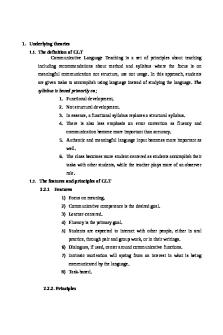Language change theories and concepts PDF

| Title | Language change theories and concepts |
|---|---|
| Author | Awa Traore |
| Course | English Language |
| Institution | Newcastle College |
| Pages | 1 |
| File Size | 354.2 KB |
| File Type | |
| Total Downloads | 50 |
| Total Views | 151 |
Summary
A mindmap of language change theories and concepts: in order to have sound AO2 knowledge for your exams...
Description
Bidialectism a regional diale Lexical gaps - the theory that a new word or meaning creates room in the lexicon for related forms e.g. Brexit = brexiter, brexiting.
Norman Fairclough
S-curve - model that describes the speed at which a new word or meaning grows in use e.g. a gradual start, then rapid increase, then a levelling off.
Infectious disease theory - We 'catch' changes from those around us and we ought to fight such diseases. However, perhaps it is not a disease because people want to change due to sociolect - they want to fit in with the language that specific social groups use. This metaphor challenges the idea that changes in language are like a virus. Crumbling castles theory - Language should be preserved intact, but language has never been perfect and must continue to change in order to cope with changing social circumstances. This metaphor is used to challenge the idea that language change means language decay. Argues against a prescriptive view of language, which identifies a vast network or rules and checks usage against these rules. Complaints by prescriptivists are often not about failure to communicate but failure to communicate in a certain way. Damp spoon theory - Language has not become lazy - the only true lazy language is drunken language. Used as a metaphor to challenge the idea that some language is ugly or distasteful. 1 - Potential - a need for a new word arises because of something new in the world. 2 - Implementation - a few people start to use the new language
3 - Diffusion - the innovation spreads and is used more widely.
4 - Codification - the new language enters the dictionary and is used as a standard for of language.
Stages to explain how new words enter the language.
Linguistic determinism - language and its structures limit and determine human knowledge or thought, as well as though processes such as categorisation, memory and perception. This implies that people of different languages have different thoughts.
Sta mak lang vers
Archaic - a word that is only rarely used in common language and we associate with older modes of speech.
Suz
Sapir-Whorf Focuses on the influence of different varieties of language e.g. dialects, sociolects, occupational lexis. Focuses on how they change mainstream language use. Explains borrowing, hyper-correction, omission and other ways in which language changes.
Substratum theory Explains how a dominant incoming language is altered by contact with a native language.
Language change theories and concepts
S Jean Aitchison
The Queen's English Society - Represent an autocratic movement and are prescriptive in their view of language and language change. Etymological argument - basis for criticising any use of words such as 'decimate' with a more general sense than their original meaning.
W t o
Evolution - suggestion that language has developed and adapted rather than decayed.
Prescriptivism - a language ideology that makes judgements about what is right and wrong.
Descriptivism - a language ideology that seeks to describe without making value judgements.
Re res
David Crystal
Codification - the grammar rules for
Obsolete - a word that is
Colloquialisation - where writing...
Similar Free PDFs

Concepts and Theories (Moodle)
- 13 Pages

Theories of Planned Change
- 10 Pages

Types of Language Change
- 9 Pages

Language development - theories
- 11 Pages

Theories of Language Learning
- 22 Pages

Globalization AND Change
- 11 Pages

Managing change and innovation
- 3 Pages
Popular Institutions
- Tinajero National High School - Annex
- Politeknik Caltex Riau
- Yokohama City University
- SGT University
- University of Al-Qadisiyah
- Divine Word College of Vigan
- Techniek College Rotterdam
- Universidade de Santiago
- Universiti Teknologi MARA Cawangan Johor Kampus Pasir Gudang
- Poltekkes Kemenkes Yogyakarta
- Baguio City National High School
- Colegio san marcos
- preparatoria uno
- Centro de Bachillerato Tecnológico Industrial y de Servicios No. 107
- Dalian Maritime University
- Quang Trung Secondary School
- Colegio Tecnológico en Informática
- Corporación Regional de Educación Superior
- Grupo CEDVA
- Dar Al Uloom University
- Centro de Estudios Preuniversitarios de la Universidad Nacional de Ingeniería
- 上智大学
- Aakash International School, Nuna Majara
- San Felipe Neri Catholic School
- Kang Chiao International School - New Taipei City
- Misamis Occidental National High School
- Institución Educativa Escuela Normal Juan Ladrilleros
- Kolehiyo ng Pantukan
- Batanes State College
- Instituto Continental
- Sekolah Menengah Kejuruan Kesehatan Kaltara (Tarakan)
- Colegio de La Inmaculada Concepcion - Cebu








